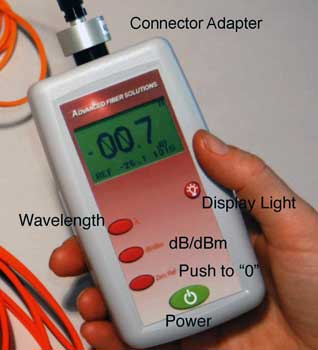All You Required to Learn About Robotic Vision and Its Applications in Advanced Optical Dimension Systems
Robotic vision represents a significant improvement in the intersection of computer system vision, artificial intelligence, and artificial intelligence. This technology improves the accuracy of optical dimension systems, allowing real-time information evaluation and enhanced quality control. Its effect covers multiple industries, from making to healthcare. The advancing landscape of robot vision increases concerns about future capacities and applications. What developments exist in advance in this transformative area?
Comprehending Robotic Vision: Key Concepts and Technologies
Robotic vision encompasses the innovations and methods that enable makers to analyze and understand aesthetic details from their atmosphere. This area incorporates components of computer vision, expert system, and machine discovering to facilitate automatic decision-making based upon aesthetic information. Secret concepts include image handling, which entails the enhancement and evaluation of pictures to extract meaningful functions, and things recognition, which permits machines to recognize and classify things within a scene.

The Assimilation of Robotic Vision With Optical Measurement Systems
As sectors progressively require accuracy and performance, the combination of robotic vision with optical dimension systems has become a transformative strategy. This synergy permits robots to regard and translate their surroundings, boosting the capacity of optical dimension systems to assess and analyze things with unparalleled precision. By equipping optical sensing units with advanced imaging modern technologies, robot vision makes it possible for real-time data collection and handling, promoting prompt changes to measurement specifications.
The mix encourages automated systems to spot variants in measurements, surface quality, and placement, which are vital in quality control processes. Boosted formulas, such as machine discovering, further augment this integration by enhancing the systems' capability to adjust to different settings and circumstances. Subsequently, the combination not only simplifies dimension procedures but likewise reduces mistakes, making certain that items meet rigorous market criteria, thereby solidifying the role of robot vision in the future of optical dimension systems.
Applications of Robotic Vision in Manufacturing
In modern manufacturing settings, making use of vision systems has actually transformed manufacturing procedures by enabling machines to do jobs with remarkable accuracy and rate. Robotic vision systems are significantly used for quality assurance, where they examine products for defects and guarantee adherence to specifications. These systems use cameras and advanced algorithms to assess products in real-time, significantly reducing the risk of human mistake.
In addition, robot vision helps with automation in assembly lines, enabling robotics to accurately determine components and assemble them with very little downtime. This technology additionally boosts inventory monitoring, as vision systems can check stock degrees and detect inconsistencies, guaranteeing a seamless supply chain.
Robotic vision help in the implementation of wise manufacturing facilities, where information from vision systems can be integrated with other modern technologies to optimize process (robotic vision). In general, the applications of robotic vision in making demonstrate its vital duty in enhancing effectiveness, top quality, and efficiency throughout various sectors
Robotic Vision in Healthcare: Changing Person Treatment

In recovery, robotic vision aids in monitoring person development and customizing therapy sessions to specific needs. It sustains doctor by automating jobs such as information collection and individual monitoring, enabling for even more time to focus on direct client communication. In addition, robot vision enhances telemedicine by enabling remote medical diagnosis and virtual consultations, linking the space between individuals and doctor. On the whole, the application of robotic vision in medical go to these guys care is reinventing patient treatment, leading to boosted end results, performance, and client contentment.
Future Fads and Growths in Robotic Vision Innovation
The rapid evolution of robot vision modern technology guarantees to additionally boost its applications across numerous industries, including medical the original source care. Future patterns suggest a substantial shift in the direction of including expert system and artificial intelligence, enabling systems to pick up from large datasets and improve accuracy with time. Boosted sensing unit modern technologies and deep understanding formulas are anticipated to fine-tune things recognition capacities, permitting robots to analyze complicated environments better.

Additionally, the combination of enhanced fact (AR) with robot vision will likely reinvent exactly how robotics aid in surgical treatments and diagnostics. This harmony will help with real-time information visualization, enhancing decision-making processes. Additionally, miniaturization of components will certainly cause more small and versatile robotic vision systems appropriate for a selection of tasks. As these advancements unfold, sectors will witness raised automation and effectiveness, solidifying robot vision as a cornerstone of cutting-edge technical solutions.
Often Asked Concerns
What Are the Key Components of a Robot Vision System?
The major elements of a robotic vision system include video cameras for photo capture, cpus for data evaluation, algorithms for analysis, and actuators for movement. Together, these components make it possible for robots to perceive and connect with their environment effectively.
Exactly How Does Robotic Vision Improve Precision in Measurements?
Robotic vision enhances measurement accuracy by utilizing sophisticated imaging technologies, allowing precise item discovery and spatial evaluation. This capacity decreases human mistake, raises repeatability, and permits for real-time changes, eventually enhancing total dimension reliability and effectiveness.
What Industries Benefit The Majority Of From Robotic Vision Technology?
Different markets profit considerably from robot vision technology, consisting of production, medical care, farming, and logistics. These sectors utilize improved accuracy, effectiveness, and automation, bring about improved efficiency more and lowered operational expenses in their particular processes.
Can Robotic Vision Solutions Job in Low-Light Conditions?
Robotic vision systems can indeed operate in low-light conditions, utilizing advanced sensors and algorithms to enhance image clarity. This capability allows them to perform properly in numerous atmospheres, including commercial and security applications, despite very little lighting.
What Are the Expenses Connected With Applying Robotic Vision?
The expenses connected with applying robot vision differ significantly, influenced by components such as electronic cameras, software, and integration. Additional expenses include upkeep, training personnel, and prospective upgrades to existing systems, which can collect over time.